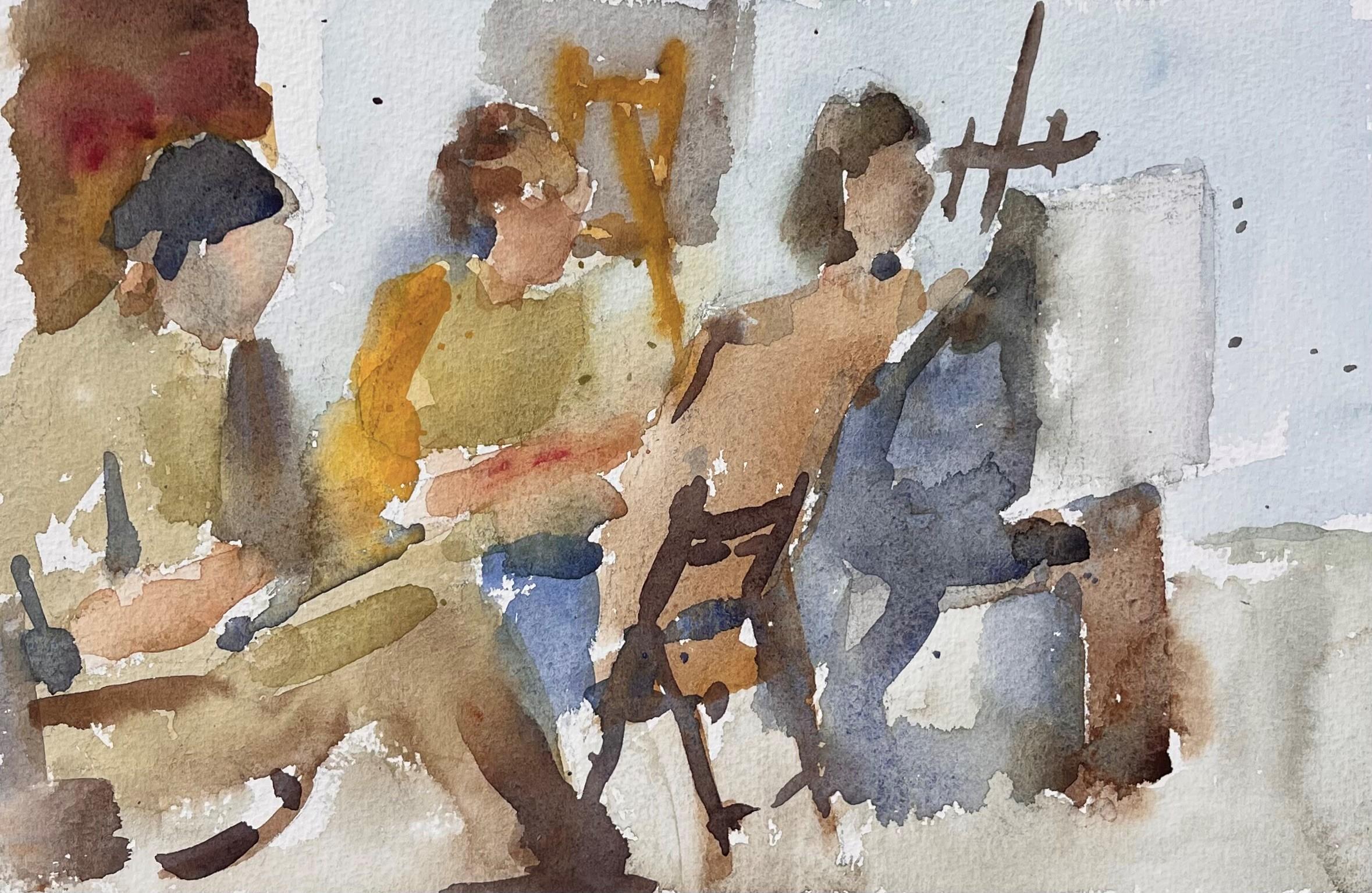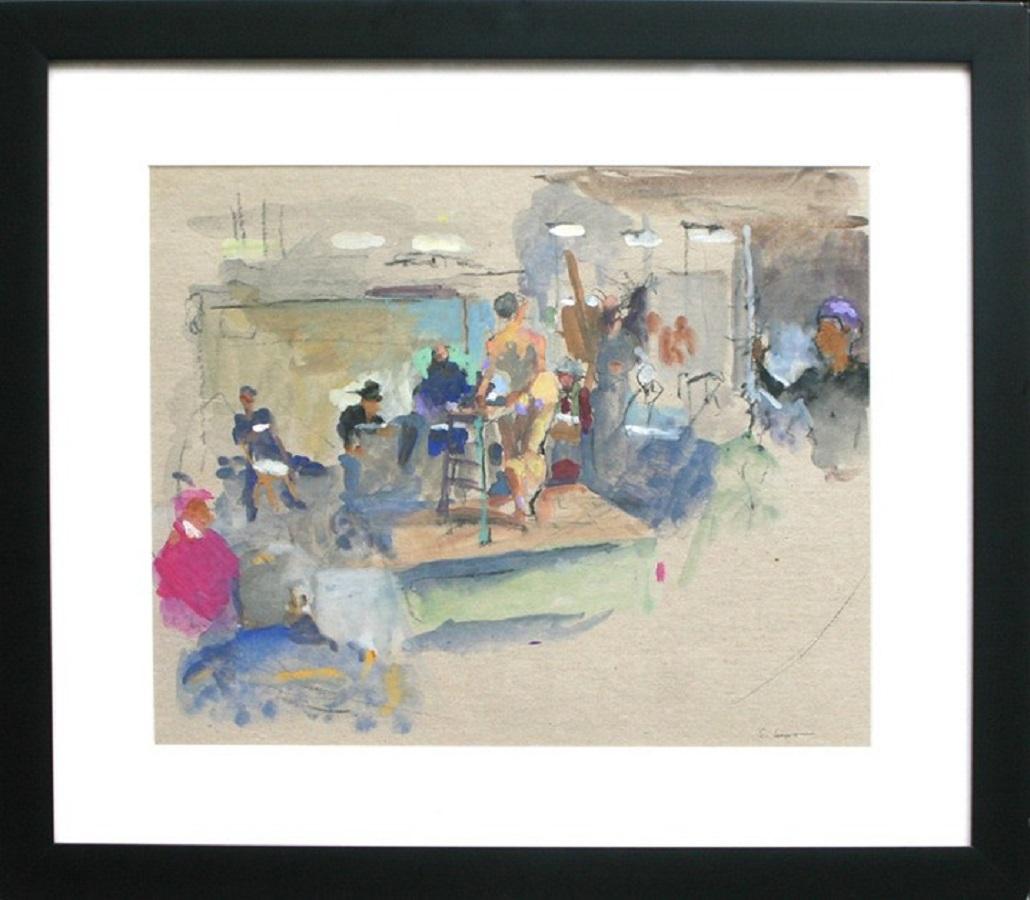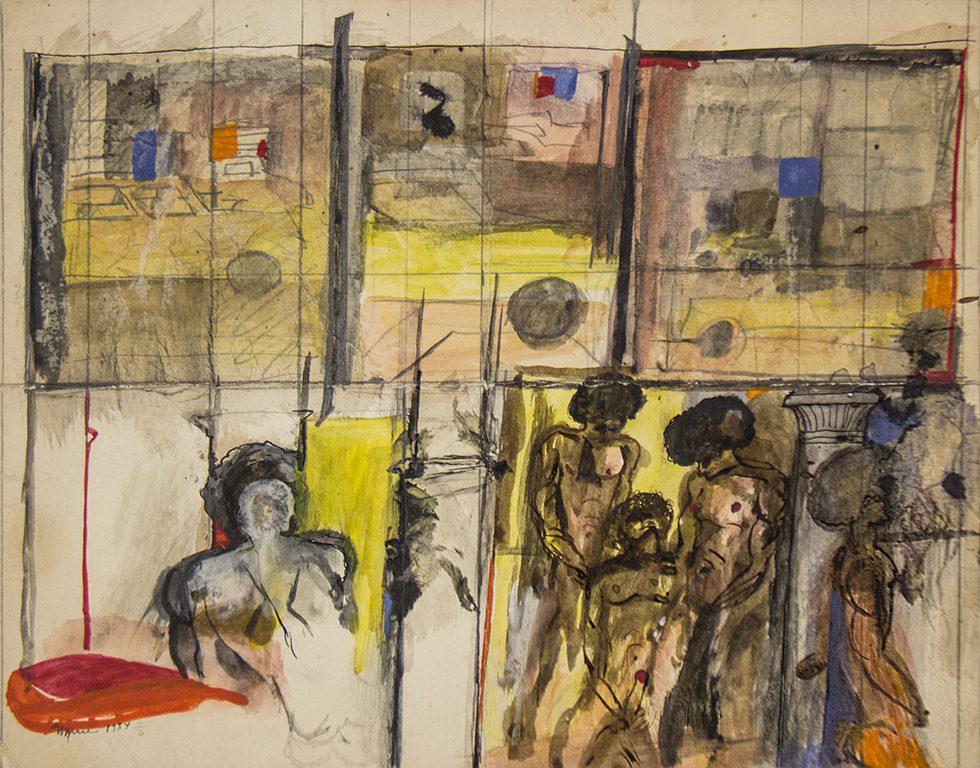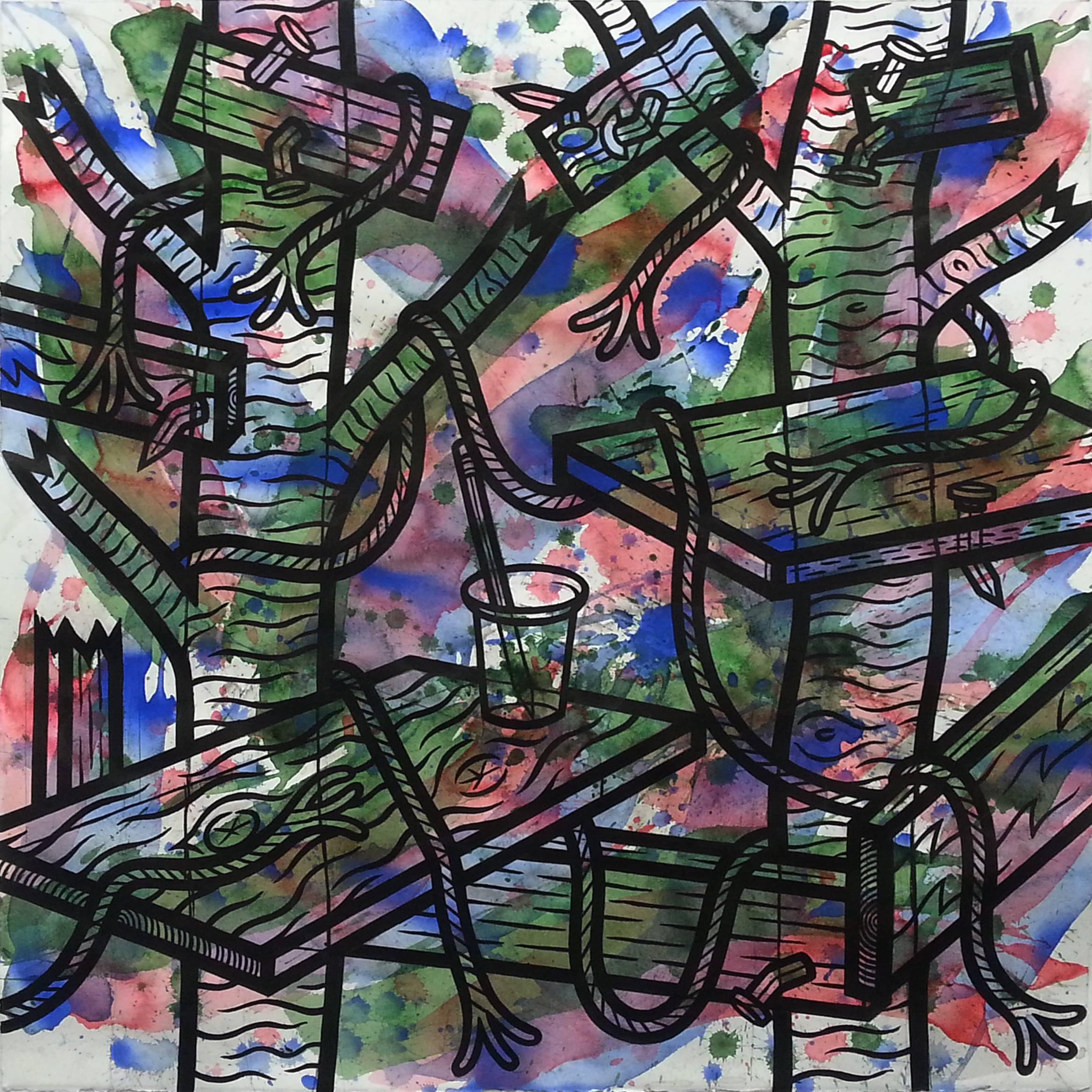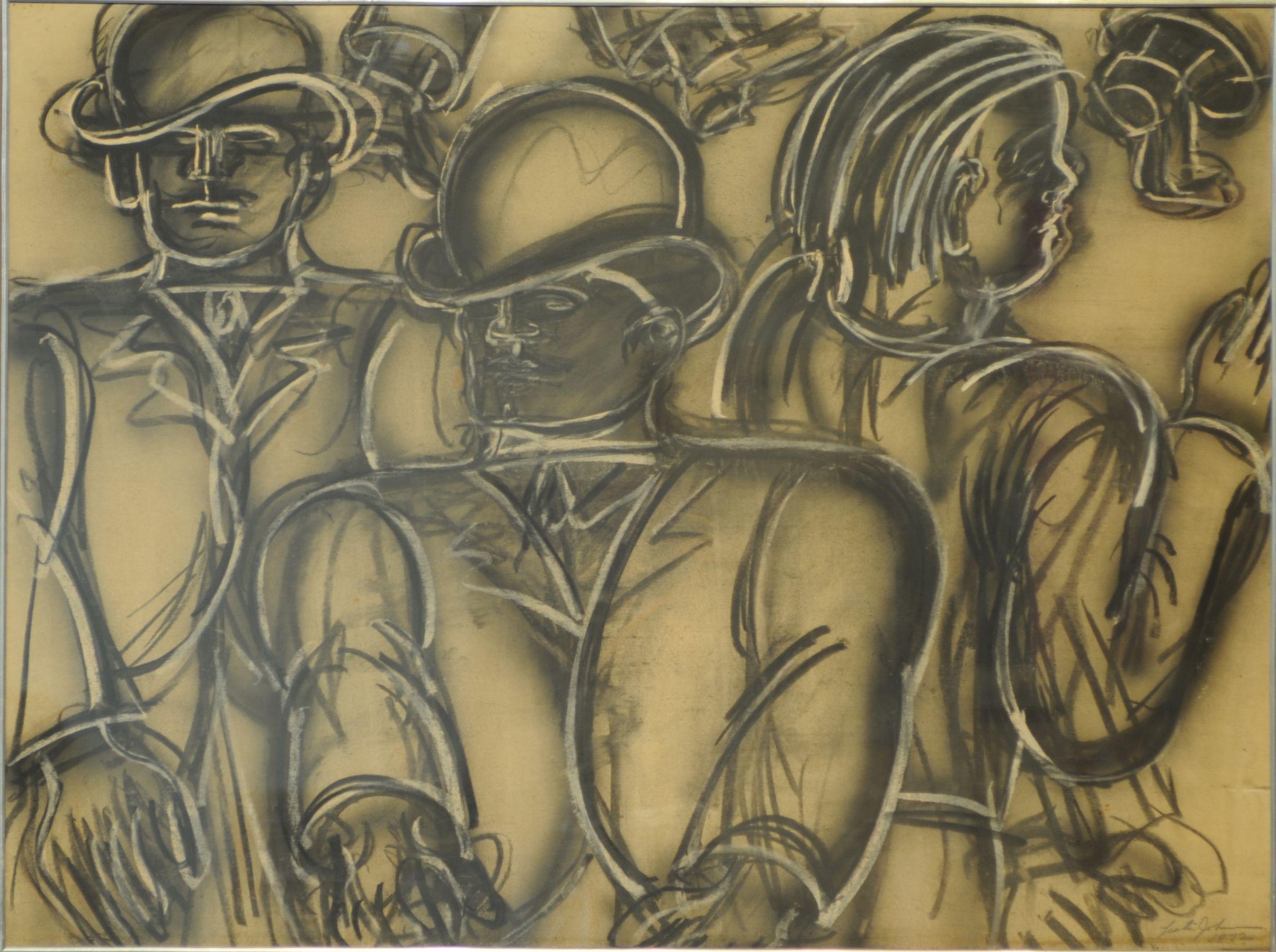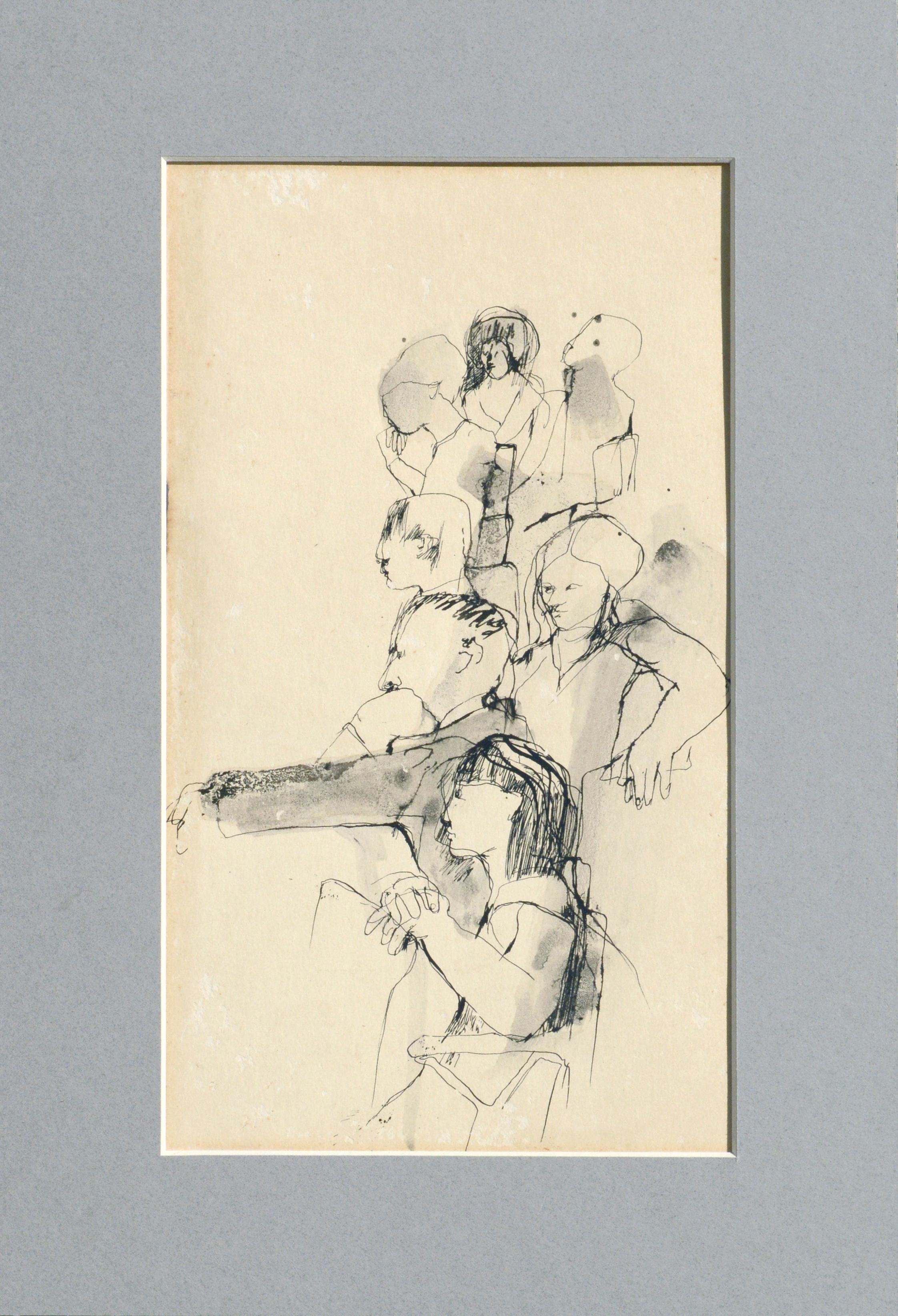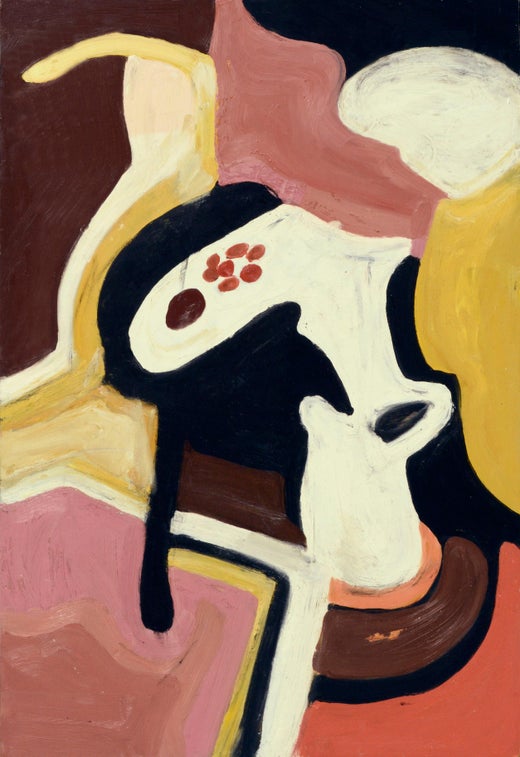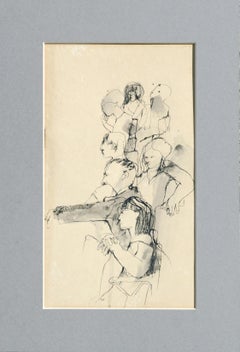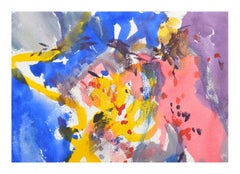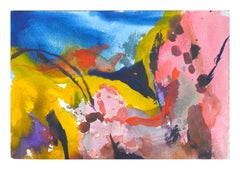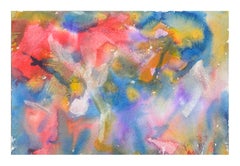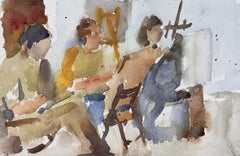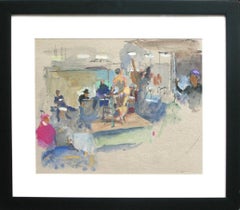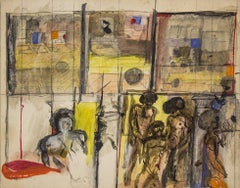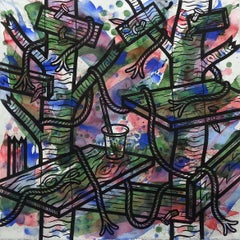Want more images or videos?
Request additional images or videos from the seller
1 of 9
Les AndersonClassroom Figurativecirca 1980
circa 1980
$375
£287.04
€329.48
CA$535.78
A$587.93
CHF 304.41
MX$7,038.06
NOK 3,819.11
SEK 3,593.05
DKK 2,461.08
About the Item
Classroom interior scene by Les (Leslie Luverne) Anderson (American, 1928-2009). From the estate of Les Anderson in Monterey, California. Signed in the lower right corner and unframed.
Les (Leslie Luverne) Anderson(American, 1928-2009) owned and operated the Bear Flag Gallery in San Juan Bautista, California for many years and was known for his plein air watercolor paintings and abstracts. Les studied at the Minneapolis School of Art and the Art Center at Los Angeles.
- Creator:Les Anderson (1928 - 2009, American)
- Creation Year:circa 1980
- Dimensions:Height: 14.25 in (36.2 cm)Width: 20 in (50.8 cm)Depth: 0.03 in (0.77 mm)
- Medium:
- Movement & Style:
- Period:
- Condition:
- Gallery Location:Soquel, CA
- Reference Number:Seller: DBH64711stDibs: LU5427286582
Les Anderson
Les (Leslie Luverne) Anderson(American, 1928-2009) owned and operated the Bear Flag Gallery in San Juan Bautista, California for many years and was known for his plein air watercolor paintings and abstracts. Les studied at the Minneapolis School of Art and the Art Center at Los Angeles.
About the Seller
5.0
Platinum Seller
Premium sellers with a 4.7+ rating and 24-hour response times
Established in 1986
1stDibs seller since 2014
3,021 sales on 1stDibs
Typical response time: <1 hour
- ShippingRetrieving quote...Shipping from: Soquel, CA
- Return Policy
Authenticity Guarantee
In the unlikely event there’s an issue with an item’s authenticity, contact us within 1 year for a full refund. DetailsMoney-Back Guarantee
If your item is not as described, is damaged in transit, or does not arrive, contact us within 7 days for a full refund. Details24-Hour Cancellation
You have a 24-hour grace period in which to reconsider your purchase, with no questions asked.Vetted Professional Sellers
Our world-class sellers must adhere to strict standards for service and quality, maintaining the integrity of our listings.Price-Match Guarantee
If you find that a seller listed the same item for a lower price elsewhere, we’ll match it.Trusted Global Delivery
Our best-in-class carrier network provides specialized shipping options worldwide, including custom delivery.More From This Seller
View AllThe Sketch Class, Figurative Study Line Drawing
By David Rosen (b.1912)
Located in Soquel, CA
Expressive line drawing figure study featuring a group of figures in a classroom by David Rosen (Canadian, 1912-2004). Unsigned, but was acquire...
Category
Late 20th Century American Modern Figurative Drawings and Watercolors
Materials
Paper, Pen, Watercolor
Colorful Abstract Watercolor
By Les Anderson
Located in Soquel, CA
Abstract watercolor with bold, dynamic colors by Les (Leslie Luverne) Anderson (American, 1928-2009). From the estate of Les Anderson in Monterey, California. Unsigned and unframed. ...
Category
1980s Abstract Expressionist Abstract Drawings and Watercolors
Materials
Paper, Watercolor
Colorful Abstract Watercolor
By Les Anderson
Located in Soquel, CA
Abstract watercolor with bold, dynamic colors by Les (Leslie Luverne) Anderson (American, 1928-2009). From the estate of Les Anderson in Monterey, California. Unsigned and unframed. ...
Category
1980s Abstract Expressionist Abstract Drawings and Watercolors
Materials
Paper, Watercolor
Colorful Abstract Watercolor
By Les Anderson
Located in Soquel, CA
Abstract multicolor watercolor with softly blended color fields by Les (Leslie Luverne) Anderson (American, 1928-2009). From the estate of Les Anderson in Monterey, California. Signe...
Category
1980s Abstract Expressionist Abstract Drawings and Watercolors
Materials
Paper, Watercolor
Florescent Figurative Abstract
By Louis Nadalini
Located in Soquel, CA
Evocative figurative abstract in florescent hues by Louis Nadalini (American, 1927-1995). Signed lower right corner and dated "Louis E Nadalini 88" on verso. Unframed.
Louis Nadali...
Category
1980s Abstract Expressionist Drawings and Watercolor Paintings
Materials
Paper, Pastel, Gouache
Multi-Color Abstract Watercolor
By Les Anderson
Located in Soquel, CA
A bright, colorful watercolor abstract by Les (Leslie Luverne) Anderson (American, 1928-2009). Signed "Les Anderson" on verso. From the estate of Les Anderson in Monterey, California...
Category
1980s Abstract Expressionist Abstract Drawings and Watercolors
Materials
Paper, Watercolor
You May Also Like
"Untitled 15, " Watercolor Painting
Located in Denver, CO
Clyde Steadman's "Untitled 15" is an original, handmade watercolor painting that depicts an impasto scene of artists with their easels.
Category
2010s American Impressionist Portrait Drawings and Watercolors
Materials
Watercolor, Paper
Under the Influence
By Simon Levenson
Located in Greenwich, CT
Figurative gouache
Category
2010s Figurative Drawings and Watercolors
Materials
Charcoal, Gouache, Board
Evocation 1
By Bill Rice
Located in New York, NY
Watercolor on paper
Signed, verso
This artwork is offered by ClampArt, located in New York City.
Bill Rice was considered by such luminaries as Rene Ricard to be one of the most important painters of urban life from his generation. Rice’s depictions of inner city gay men...
Category
1980s Other Art Style Figurative Drawings and Watercolors
Materials
Paper, Watercolor
Price Upon Request
Moment
By Jesse Lambert
Located in New York, NY
30"x30" ink and watercolor on paper, signed on reverse by artist. This painting is presented floated in finely crafted shadowbox frame.
Washes of colors in deep blues and...
Category
2010s Contemporary Interior Drawings and Watercolors
Materials
Archival Ink, Watercolor, Archival Paper
untitled
By Lester Johnson
Located in New York, NY
Lester Johnson untitled charcoal, conte crayon, and spray enamel on board from 1972. Framed.
Category
1970s Other Art Style Figurative Drawings and Watercolors
Materials
Conté, Charcoal, Spray Paint, Board
$12,000 Sale Price
20% Off
Untitled
By David Remfry
Located in Boca Raton, FL
Whether obscured by the smoky nightclub lighting or enlivened by the strong color of the Mardi Gras dancers, David Remfry’s life-size watercolors evoke a kaleidoscope of movement. M...
Category
21st Century and Contemporary Contemporary Figurative Drawings and Water...
Materials
Watercolor, Archival Paper
$22,000
More Ways To Browse
Mid Century Modern Art Paintings
Vintage Publications
Blue Abstract Paintings
Framed Photography
Black And White Photography Series
Artist Signatures
Signed Plate
Antique Lithograph Prints
Vintage Attends
Slim Aarons Prints
Framed Acrylic Painting
French Oil Paintings With Frame
Oil Paintings New York City
Used Plexiglass
Antique Original Prints
Black And White Framed Photographs
Artist Proof
Used Tvs
